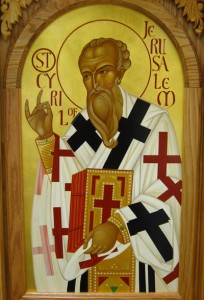My wife is expecting, due within a month or so. When we first discovered the pregnancy, it seemed unreal, just a little colored line on a test strip. It was easy to forget for a moment that anything had happened. But soon my wife couldn’t forget, not even for a moment, and not long after that I felt the same way. Then other people began to ask: is Jacinta expecting? By now, I can sort of play with the little person in there, squishing a little knee to provoke a reaction, and nobody asks anymore whether a baby is on the way. There’s—there’s a person inside my wife!
But it all just makes me more eager for the moment of birth. That’s when we meet our new friend. Now he—she?—is real enough, but off in his own world, not yet with us. I always think of my children’s birthdays as the days when we received them, even though in some metaphysical sense we had them for months before that. Birth is when they exist not just in themselves but in a way addressed to us.
I think of all this today as I ponder the solemnity of the Annunciation. Mary knew of Jesus, but had not met him—not yet. Then Joseph knew of him, and then Elizabeth, and through her, Zechariah. The reality of his life became more public with time. But only at his birth did his life blaze out in light to the world and become a life addressed to us. The old Christmas chant nails it:
Today Christ is born / Today the Savior has appeared
In its historical origin, Christmas was an epiphany feast, a feast of Christ’s manifestation. In the west the birth was celebrated on December 25 while in the east it was celebrated on January 6 along with other manifestations. In the fourth century, east and west traded feasts and ended up with both December 25 and January 6, and so the first became exclusively a feast of the birth and the second a feast of the other manifestations.
If Christmas is the feast of the Incarnation addressed to us, today is the feast of the Incarnation addressed to us only in the person of Mary, a quiet unknown who stands in for all mankind. If Christmas is the feast of light bursting forth on the world, today is the feast of hidden hope. And the feast of hidden hope was the historical origin of the feast of light revealed.
In that way, it actually fits the current season. Christmas is like Easter in being a time of hope realized and glory manifested. During Lent we enter into Isaiah’s description of the Suffering Servant:
He had no form or comeliness that we should look at him, and no beauty that we should desire him. He was despised and rejected by men; a man of sorrows, and acquainted with grief; and as one from whom men hide their faces he was despised, and we esteemed him not. (Isaiah 53:2-3)
The Savior is right there, but the world sees nothing in him to notice. Hope is ready to conquer, but it has no form or beauty that would attract attention. Today’s feast is one of joy, but it highlights an aspect of the otherwise sorrowful season of Lent, the note we should feel in our hearts throughout the day: hidden hope.





